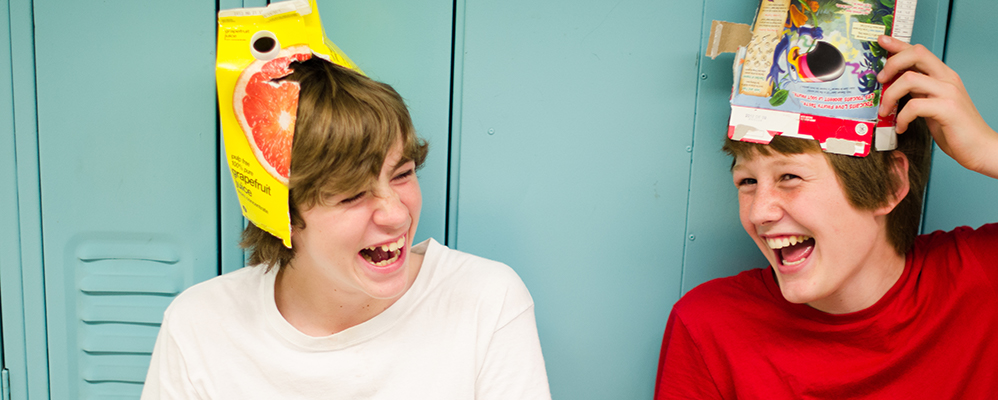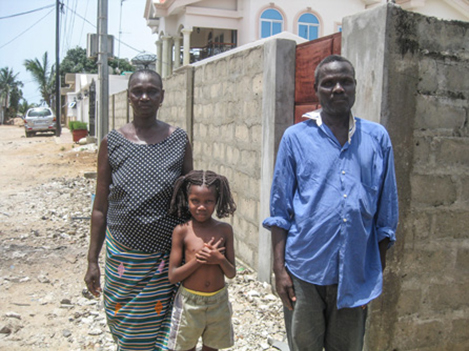Make-Believe Learning


What do students learn from
make-believe learning?
Learning Story
As students engage in dramatic play and process drama, they use the elements and conventions of drama to communicate feelings, ideas and stories.
How do students learn to control their behaviour when circumstances make them feel sad or mad? Lonely or bullied? Disenfranchised or lacking a voice? Elated or proud?
Young children often engage in role play but typically older children create story dramas in their heads. In this way, they can imagine a sense of control and invent happy, successful endings to situations that are in fact out of their control. Interestingly, video games are now an accessible way for children to enter virtual worlds and exercise a control which they do not have in their everyday lives.
Make-believe is a form of play-based learning in which students can set the parameters. This type of play helps them control their thinking and behaviour. This self-regulation helps children develop persistence, master tasks, co-operate with others and make ethical choices. When children are involved in make-believe learning they have the time and opportunity for repetition which in turn helps them to explore their ideas more deeply.
I wanted the students to become thoughtful global citizens and to reflect on the lives of children around the world. In order to address oral language expectations and to understand the comprehension strategy of inferring, I showed pictures of children in different situations worldwide and asked students to engage in a role play activity similar to the one they saw in the photos.
Students were asked to choose a partner for this activity during our social studies time. I posted five pictures of children around the word. Each child appeared in their home or in their neighbourhood so the students had a clue about their lifestyle. As a class, we examined the photos and tried to infer as much as we could about the circumstances of each child. This allowed me to model the thinking involved in the process of inferring.
The dialogue below followed on a previous role play I had modelled with the class. I asked one student to act the role of a nursery rhyme character, while myself and the other students asked the character questions about their circumstances and emotions. Goldilocks, for example, was a character who really had a lot of explaining to do for her actions. (It should be noted the following exercise would not have worked without prior modeling.)
Later, in their pairs, one child took on the role of the child shown in one of the photos, while the other child chose any role they liked, so long as it encouraged interaction. Some students decided to be a teacher who wanted to ask the child questions about schooling, others chose to be a friend who visits to play and talk and one student chose to be a reporter who wanted to conduct an interview with the child.
As I listened to the conversations, I noted the following:
- questions at the start of the conversations were casual and did not evoke emotional responses;
- the atmosphere in the class was initially upbeat but became increasingly serious and more emotional as students asked more intense questions; and
- those in the role of the child began digging deeper into their emotions as they put themselves into the make-believe role of another.
The students were then asked to write a reflective response to the activity. They were to continue in their role as child or questioner and record their feelings about the event. It was to be completed for homework.
The following day, the children traded journals with their partners and read each other’s journal entry, followed by a reflective conversation. (This too had been modeled previously and was a familiar activity.)
As a whole class, we then asked a student who had played the role of a child from a photo to stand by the picture and accept questions from the rest of the class.
Here is an excerpt of the conversation prompted by the two pictures we had of a girl named Alice. We did know that Alice’s family takes care of an empty lot for a wealthy man who has not built his home yet – one picture was taken outside of the property and the other is taken of the interior of the property.


We talked first about the setting and situation. Alice lives in Africa and obviously lives in the city as we can see other homes in the neighbourhood. Although the other homes are large and apparently owned by wealthy people, Alice’s lot is quite different and the family appears to have very little. The partners decided that Alice would have a friend come to visit and the conversation would be between these two friends.
Alice: I am happy that you came over to play with me today.
Friend: What do you have to play with?
Alice: Nothing really. I don’t have much time to play anyway.
Friend: Well, what do you do?
Alice: I help my mom. We could go and get some water! I have an extra bucket you can put on your head and we can do it together.
Friend: Okay, could you show me how to do it? I’ll help you but isn’t that too heavy for us?
Alice: Yeah, but I have to do it every day. I get used to it.
Friend: Doesn’t it hurt?
Alice: Yeah. My mom rubs my neck sometimes when I get home.
Friend: I have to go to the bathroom.
Alice: Okay, just squat over there.
Friend: There is no bathroom?
Alice: Nope, we just go in the sand. But now we have water so you can wash your hands after. Lucky you helped me get it.
Friend: What do you want to do when you grow up Alice?
Alice: I want to be a doctor. I like to help people and the doctor at the clinic is so nice.
Friend: You must like school then.
Alice: I do like going to school. Or maybe I will be a teacher.
Following our discussion, the students were quiet for a few minutes. I realized they were beginning to identify and understand major issues faced by children in different parts of the world and their level of empathy was deepening. They were becoming more thoughtful in their questioning and were able to solicit interesting and emotional information from their partners.





